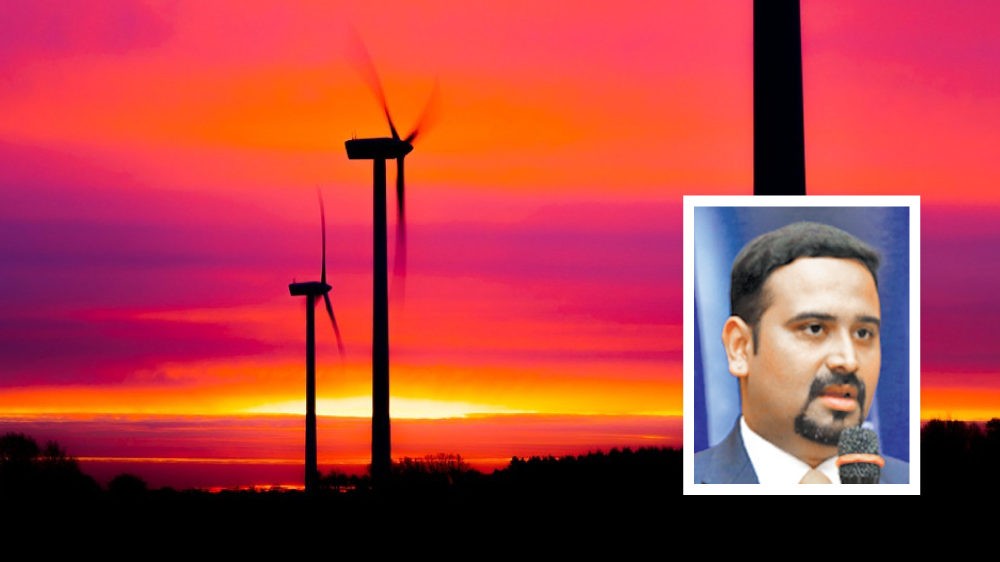Lightning surge protection and earthing techniques for wind turbines
By EPR Magazine Editorial August 7, 2018 2:08 pm IST
By EPR Magazine Editorial August 7, 2018 2:08 pm IST

Modern, high-performance wind power systems make extremely high demands of the quality and reliability of the components used. Particularly important is the electrical infrastructure, which is of key significance for the functional safety of the entire system. This article concentrates on the measures taken towards the protection of wind turbines.
A whole branch of industry can profit from the driving force of a very old form of energy, wind energy. Wind power systems have been long established as a technology for the future to use renewable energies. Various research studies show the significance of protecting wind turbines from more common problems such as lightning strikes and failure of internal equipment due to lightning related surges.
Due to changing climatic condition and increased number of thunderstorm activities, many wind turbine manufacturers invested their sincere efforts by implementing various measures such as providing lightning protection system for the turbine and SPDs (Surge Protection Devices for the panel equipment) and also earthing solutions in order to protect their assets from damages. The most common damages could be caused to human life in open areas and to equipments. Protecting a life from the risk of lightning strike can be effective by training them or spreading awareness about the do’s and don’ts at the time of lighting. However, protection of equipment and structure can be done by proper planning through the lightning protection system including surge protection and effective earthing system.
It is inevitable to have wind turbines in remote and open areas where threat due to lightning is higher. It is not only lightning strikes that pose a latent threat to these systems, more and more frequently, today’s electronic equipment is damaged by surges caused by remote lightning discharges or switching operations in larger electrical systems. During thunderstorms, too, high volume of energy is instantaneously released. These voltage peaks can penetrate a building through power, data and communication lines causing heavy damage to electronic equipment.
Failure or non-availability of these equipments in a wind turbine will lead to ‘loss of generation’ in turn leading to heavy revenue loss. Electromagnetic interference, which is generated by distant lightning strike, can also scramble the functioning of equipment. Selection and installation of proper surge protection devices at corresponding location can help in protecting the system from failure due to surges.
The lightning arrestor, technically called air terminals, on the top of the wind turbines associated with down conductors and good earthing protects only the wind turbine structure against direct lightning strikes and avoids collapse. For example, when a tall structure is struck by lightning, there are possibilities of structural damage or fire damages.
The fact behind this is that the external lightning protection system does not protect the electrical or electronic gadgets which are housed inside the building. SPDs are the only one to help in this case. Hence, the concept is very clear, external lightning arrestor protects the building and SPDs installed inside and near the electrical, electronic, communication, data, voice equipment protects them individually in line with each separate cable entry. In case, if a building is provided with external lightning arrestor, it is a must to have higher rating SPDs at the main distribution board level. SPDs distinguish itself from the normally popular MCB / Opto-couplers / isolation transformers / stabilizers etc. due to one very important reason, they act in micro-second duration when compared to its counter parts which are primarily used to take care of steady state errors. Hence, these short duration transients have their associated current/voltage/frequency in mega levels something such as mega volts, kilo amperes & kilo hertz of frequency. A dedicated lightning protection may not be required in all the cases for such towers since the entire metal body itself is conductive.
Authored byWe use cookies to personalize your experience. By continuing to visit this website you agree to our Terms & Conditions, Privacy Policy and Cookie Policy.